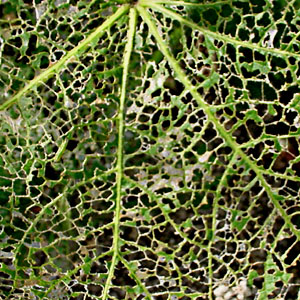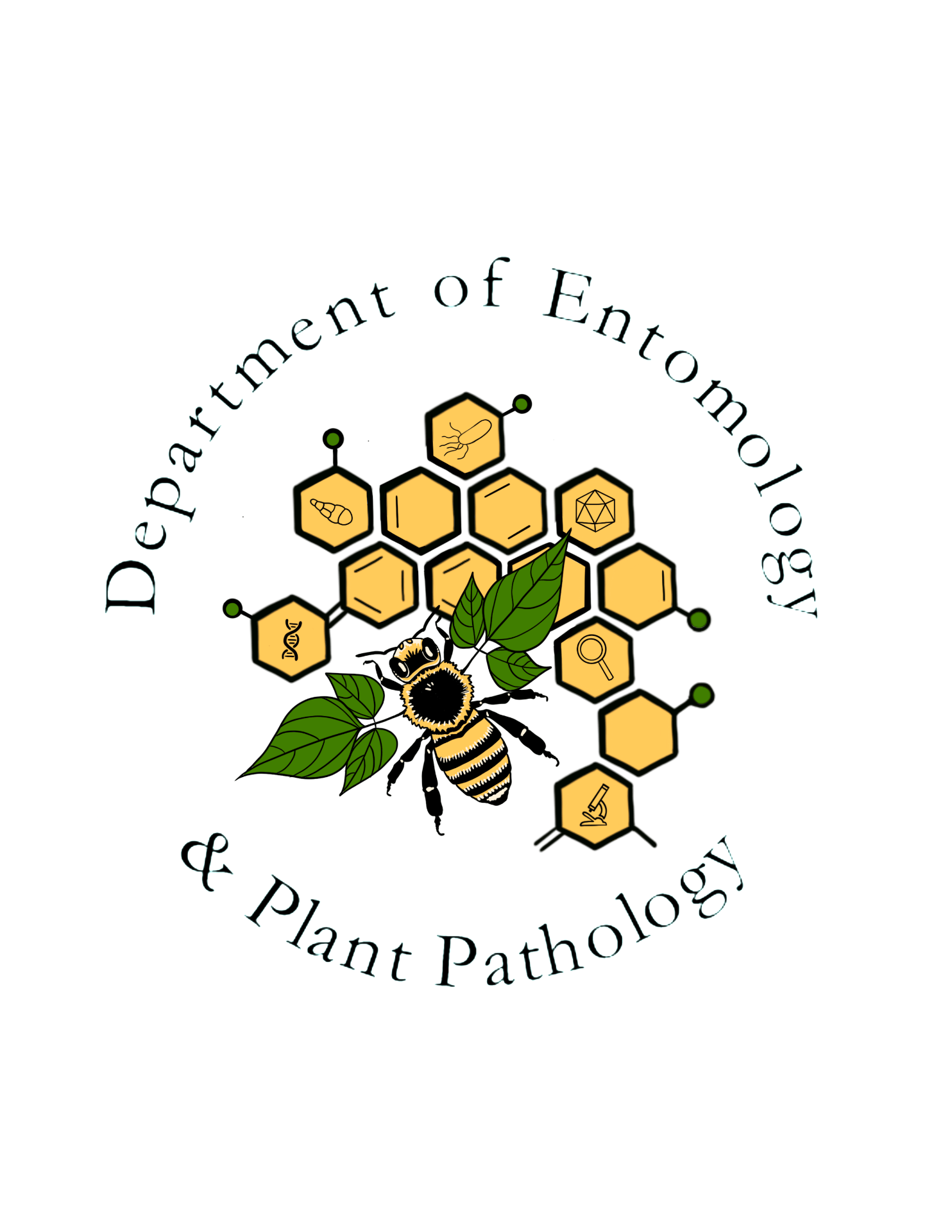Mallow or hibiscus sawfly
Order: Hymenoptera
Family: Argidae
Genus and species: Atomacera decepta Rohwer


This pest of hibiscus, hollyhock, and other ornamentals has been called the hibiscus sawfly in the scientific literature. However, it attacks several members of the mallow family, Malvaceae, and is perhaps best referred to as the mallow sawfly.
Adult Atomacera decepta are small and stout, not quite a quarter inch long. They are mostly black, except for a yellowish brown area on top of the thorax of many specimens, and the wings are smoky. Mature larvae are pale green, have a dark head, and reach about half an inch long. Each thoracic and abdominal segment bears a transverse row of four to six truncate tubular glands. The species occurs from New England south to Florida, and west to Missouri, Arkansas, and Texas.
The mallow sawfly is considered a minor pest, but when it invades foliage of lovingly tended ornamental plants, turning it to lacy skeletons, the gardener’s paradise surely is in major crisis. Plants especially susceptible to attack by the mallow sawfly include the popular ornamentals hollyhock (Alcea rosea), rose mallow (Hibiscus moscheutos), and some other Hibiscus species. The mallow sawfly shows little or no interest insome other economically important malvaceous plants, including cotton, okra, and rose of Sharon.


Adult females lay eggs in the upper surfaces of leaves, near the leaf margin, producing blister-like swellings. When the larvae hatch, they move to the underside of the leaf and begin feeding. Early instars feed only on the undersides of leaves, scraping away most tissue, but creating small “windows” by leaving thin, transparent layers. Later instars feed on both lower and upper surfaces of the leaves, avoiding large veins, and they perforate the foliage completely. Mature larvae pupate in cocoons that they spin at the base of the plant. The species has up to six generations per year, and adults are active from mid spring until frost.
